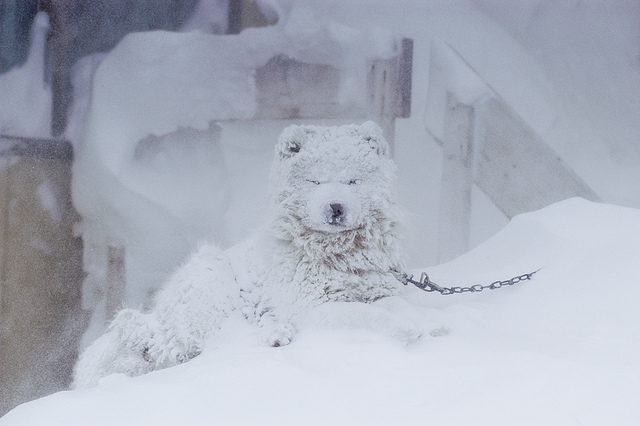Extreme precipitation events and natural hazards

Scientific climate model projections for Canada's North, including Nunavut, show that the recently observed rates of environmental change will continue. Coupled with a unique degree of sensitivity of Northern ecosystems, the impacts of climate change in the Arctic over the next hundred years are expected to surpass that in many other regions of the country and the world. However, the complexity of responses in biological and human systems, and the fact that Northern populations are also experiencing stress from many other sources, must also be considered.
Climate simulations consistently indicate a “polar amplification” phenomenon, which is greater warming in the Northern high latitudes compared with warming over the entire globe.
For the Arctic regions, climate models predict an increase in temperature of 2-4°C by the middle of the 21st century, and an increase of 4-7°C by the end of the century, depending on the GHG emission scenario used.
In the Canadian Arctic the largest seasonal warming is projected to occur in the autumn and winter over the Arctic Ocean, with decreased seasonal warming in the summer. This trend extends onto land, though it is much less pronounced.
Despite the general warming trend, there is considerable spatial variability in expected temperature change in the Arctic.
Simulations also show a general increase in precipitation (10-28%) over the Arctic by the end of the 21st century, which is robust among models. This can be attributed to the projected warming and related changes in atmospheric moisture content. This increase in precipitation also exhibits spatial variability in the Canadian Arctic, with the greatest projected increase to occur over regions in the high Arctic and Arctic Ocean (30-40%) and the smallest to occur in the Atlantic region (<5-10%).
The percentage increase in precipitation is projected to be largest in the winter season and smallest in the summer, which is consistent with the warming projections. Get out your qammiqs and Sorels!
These projected trends in temperature and precipitation regimes throughout the Canadian Arctic highlight the need to better understand the current status of and changes in relationships between the needs of Nunavummiut and Northerners and our environment. This means working with residents on cold and heat exposure; the use and contact with snow, ice, wildlife and other environmental resources. This understanding and adaptation must also consider seasonality and regional specificity because a variety of physical processes, feedback systems, and natural variations will cause uneven climate impacts across the North.
These regional and seasonal specificities imply differential environmental health risks in these regions.

Increased precipitation and warming temperatures have the potential to increase the risks of natural disasters such as avalanches and landslides for communities in mountainous regions of the North. Fatal avalanches and property damage have been recorded in Nunavik (Arctic Quebec), Nunavut, NWT and the Yukon. Following an avalanche in 1999 in the Nunavik community of Kangiqsualujjuaq that killed nine people and injured 25, the Ministère de la Sécurité publique du Québec (Quebec ministry of public security) conducted a review of avalanche risks and protective measures in 2000. It was concluded that the topography, early winter, rain, freezing, heavy winds and snowfall on a crust of ice that allowed the destabilization of the snow mass were included among conditions reported as associated with this avalanche.
Based on the analysis, a recurrence of the 1999 event every 50 years was estimated. Communities in Nunatsiavut and other regions have reported an increasing frequency of mid-winter thaw–freeze events that can create conditions conducive to avalanches.
Current model projections report the greatest warming during the winter in the eastern Arctic, accompanied by increased precipitation. However, regions of western Arctic are particularly vulnerable; communities most at risk are those in the mountainous regions of the Yukon where significant winter warming has already been experienced to date and significant increases in winter precipitation are projected for the future.
In summer and fall months, landslides are a concern on slopes where permafrost is melting and exposed to heavy rainfall. Communities of the NWT and in Arctic Bay, Nunavut, have reported recent observations of such events for the first time in existing memory. These events are reported to result in an increase in dangerous travelling conditions in these locations.

Copyright © All Rights Reserved

